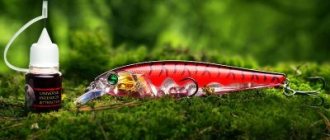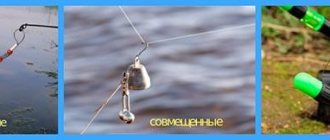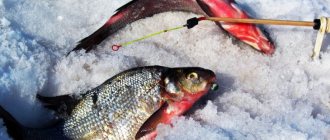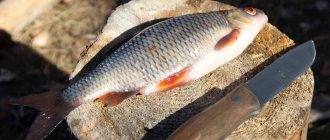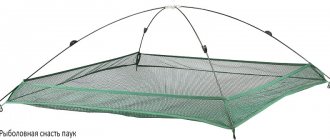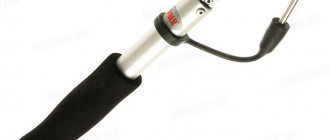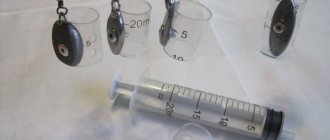A fishing attractant is an aromatic and flavorful additive that is applied to bait or bait and helps improve the fish’s bite. In other words, an attractant is a flavoring agent in the form of a gel, spray or thick liquid that is designed to improve the visibility of bait in the water.
Moreover, attractants are used not only for carp and feeder fishing, but also for spinning fishing.
For predatory fish, you should choose special attractants with the tastes of blood, meat, shrimp, crab and other meat and fish flavors. To catch peaceful fish, you need to use sweet and meaty ones, and with the smell of all kinds of spices. You never know exactly what smell will peck at the moment.
It’s worth noting right away that attractants are not a panacea and will not increase your bite several times. The effect of such an additive will be that the bites will become a little more often, a little longer, a little stronger. This is due to the fact that the fish that grabs the bait will keep it in their mouth for more time, since the attractant has some rich taste.
Attractants, depending on their type, may contain the following components:
- Flavors.
- Amino acids.
- Salt.
- Sweeteners.
- Betaine.
Attractant gels

For spinning fishing, attractant gels are usually used, which are applied to all kinds of baits: wobblers, twisters, vibrating tails, spoons, rattlins, foam fish, etc. Thick gel sticks to the bait better and does not need to be renewed frequently. A tasty bait remains in the fish’s mouth a little longer, which means the hooking time will be a fraction of a second longer, but this can decide the fate of the fishing.
Variety of species
Today there are already a great many different types of such odorous substances. There are some that are universal, and there are also those that are aimed at attracting a strictly specific type of fish. Let's look at the characteristics by which they differ and what types exist.
By purpose
Depending on their purpose, attractants are divided as follows:
- To attract fish to a certain place and to feed them.
- For processing bait. Both artificial and natural baits are treated with this substance to activate the bite.
Also, depending on their intended purpose, attractants are divided into:
- Are common. These are the substances that will help attract almost any type of fish (universal).
- Targeted. These substances are primarily aimed at attracting a specific species, for example, an attractant for pike perch.
By release form
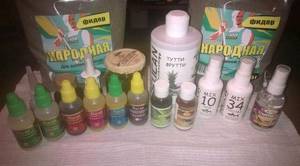
- Dry powders or briquettes. They are most often used as part of various baits to increase its effectiveness.
- In the form of concentrated liquids. They are used mainly in the warm season, since at subzero temperatures they freeze.
- In the form of thick syrups. Such substances are used both for adding to bait and for applying to the main bait. The bait can be natural or artificial.
- In the form of sprays.
By composition
Depending on what materials were used in the manufacture of the attractant, they are divided into:
- Traditional. They contain, experimentally selected, various natural substances with a strong odor.
- Commercial. These are drugs manufactured industrially for sale in specialized retail outlets. They are usually produced by companies that have special laboratories to study the effects of various components on certain types of fish.
- Hunger stimulants. These are new substances containing artificial pheromones.
Attractant sprays
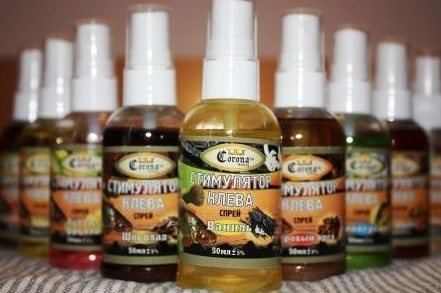
Sprays are usually used for feeder and float fishing, when the bait has to be constantly updated. The advantage of the spray is its ease of use, but the disadvantage is that it is quickly washed off. But such sprays are convenient and small, you can take large quantities of them with you when fishing. Another name for such sprays is dips for attachments.
Attractant. What is this Miracle Remedy?
Attractants for predators (bite enhancers) are special substances that affect fish receptors. In other words, these are concentrated aromatic additives that activate the bite.
They contain amino acids, flavors, sweeteners, salt and other components to which fish react. Bite enhancers are applied to the bait to attract the attention of the fish and awaken its appetite.
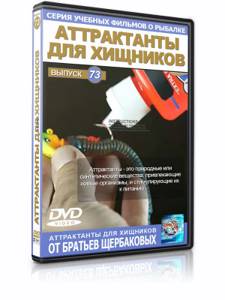
Types of attractants by purpose:
For processing bait. They can be used to soak soft and silicone baits and foam fish. Liquid attractants can be used to lubricate leashes;
For bait. With their help, the fish are pre-fed to the spot. In this case, powdered attractants are used - they are added to the bait.
Depending on the type of bite amplifiers, they have a certain operating principle:
3 ways to improve your fish bite!
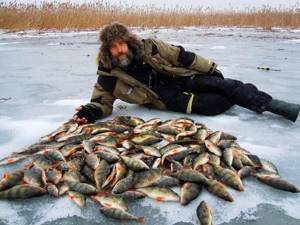
Over 15 years of active fishing, I have found many ways to improve the bite, and here are the most effective:
1. Bite activator . This pheromone additive attracts fish most strongly in cold and warm water. The Fish Hungry bite activator has proven itself to be excellent - Read more…
2. Tackle with increased sensitivity . You should first familiarize yourself with the features of using a particular type.
3. Pheromone baits . They attract the attention of fish, stimulate hunger and cause a schooling reflex, which allows you to collect a lot of fish in one place.
You can get the rest of the secrets of successful fishing for free by reading my other materials on the site.
3 ways to improve your fish bite!
Over 15 years of active fishing, I have found many ways to improve the bite, and here are the most effective:
1. Bite activator . This pheromone additive attracts fish most strongly in cold and warm water. The Fish Hungry bite activator has proven itself to be excellent - Read more…
2. Tackle with increased sensitivity . You should first familiarize yourself with the features of using a particular type.
3. Pheromone baits . They attract the attention of fish, stimulate hunger and cause a schooling reflex, which allows you to collect a lot of fish in one place.
You can get the rest of the secrets of successful fishing for free by reading my other materials on the site.
Aquatic . Dissolve quickly and distribute aromas over long distances; Oily . They form a fragrant cloudy cloud around the bait (it stretches after the wiring); Alcohol . Good for fishing in cold water.
There is also a huge variety of smells, which makes it easy to find the right attractant for the most picky predator. This can be either an amplifier with the aroma of anise, bloodworms or even raspberries.
Powder attractants
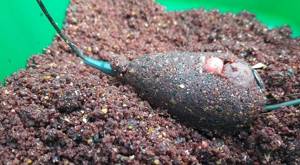
Powder (dry) attractants for bait are used in feeder, float and carp fishing. Such dry mixtures are added to the bait, moistened with water, and attract fish to the fishing site due to the more fragrant bait. Whether bait powders can be classified as attractants is a very controversial issue, but for the overall picture it’s worth knowing.
We also recommend that you familiarize yourself with DIY bait recipes.
How to prepare an attractant yourself
Creating attractants for fishing with your own hands is not so difficult. The ingredients that make up them are accessible and cheap, all you have to do is put in your work and get an excellent result. At the same time, you can increase the bite of not only predatory fish. There are different attractant recipes for this. Let's study them in more detail.
Attractants for predatory fish
It should be noted that the majority of predatory fish prefer sweet fruity smells in the warm season. When it gets colder, their tastes change - animal smells with spicy undertones are gaining popularity. Fish oil, canned fish, chopped offal and worms, as well as dried blood are excellent for these purposes.
Let's look at what the most common types of predatory fish prefer:
- Pike does not react to artificial odors. Natural scents are what attracts her. This fish loves to watch its prey, camouflaging itself in algae.
- Pike perch is a nocturnal predator. During the daytime, it rests in depressions at the bottom of the river. To ensure this lifestyle, pike perch has an excellent sense of smell. This fish is characterized by restless behavior, and therefore, when it smells an attractive smell, it will pursue prey. Considering this fact, we can conclude that a suitable attractant is a guarantee of a good catch.
- Perch is sensitive to aromas, but its preferences change depending on the season. Therefore, it is not surprising that a summer attractant will be useless in winter. It is important to consider that soft twisters and vibrating tails made of silicone absorb odors well. Therefore, you need to remember what bait was applied to each of them. Given the sensitivity of perch to odors, choosing the right aroma will not be difficult.
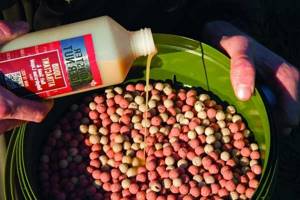
How to attract crucian carp
There is an opinion among fishermen that attracting peaceful fish, including crucian carp, with the help of attractants is pointless. Experience shows that a well-chosen scent increases fishing success. The main principle is to avoid excess odor. This is especially true for summer fishing. It is better to prefer vanilla, fruity and sweet aroma. In early spring and autumn, products with the smell of worms and bloodworms are popular.
Here are some recipes for catching crucian carp. During the cold period, the following composition is used:
- sunflower oil – 3 parts;
- amino acids in solution – 1 part;
- alcohol – 1 part;
- sweetener – 1 part;
- flavoring – 4 ml;
- essential oil – 2 drops.
In the warm season, the following recipe is effective:
- nut or corn oil - 3 parts;
- amino acid solution – 1 part;
- sweetener – 2 parts;
- flavoring – 4 ml.
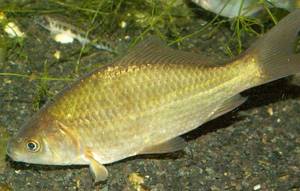
Universal action attractants
Here are some DIY recipes that can attract different types of fish.
Recommended reading: Catching fish in currents from the shore and boat
Recipe No. 1. Dry the bloodworms, worms and snails, then chop them and leave them in alcohol for 7 days.
Recipe No. 2. This alcohol-based flavor is prepared by infusing dry dill, anise, cloves, cinnamon and garlic. Mix everything and pour a glass of vodka, leave for 21 days in a dark glass container. If dried plants are not available, fresh ones can be used. In this case, you need to add a small amount of salt to the tincture to prevent fermentation processes. This attractant is used both for dipping the bait and for soaking it.
Recipe No. 3. This is the simplest and most affordable option. You will need simple tea bags. It is acceptable if they are flavored with the smells of cinnamon, honey, currants, strawberries or apples. The following ingredients: soy sauce, hemp oil, ketchup and milk powder. Place 6 tea bags into the prepared bowl and pour boiling water over it. Then add 2 tbsp. sugar and 1 tbsp. the above products. After the mixture has been infused for half an hour, it must be strained. This attractant is suitable for soaking bait.


